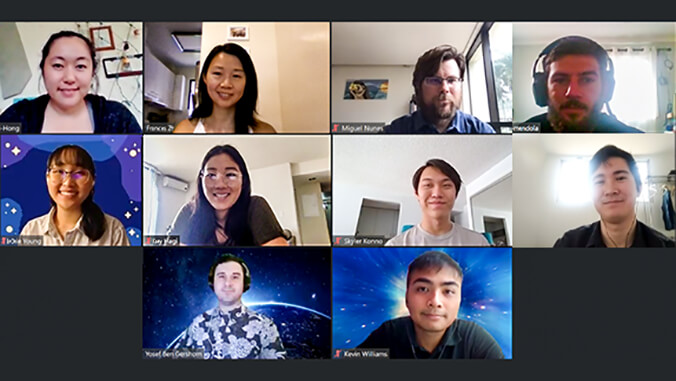
In a bold new initiative to inspire the next generation, NASA has awarded $2.4 million to six universities, including the University of Hawaiʻi at Mānoa, as part of its Artemis Student Challenges. UH Mānoa received $500,000 to create to create an affordable 1U CubeSat kit, which will help develop a robust aerospace program starting at the undergraduate level, including hardware, software and an online lab course.
UH Mānoa will generate hands-on learning opportunities related to orbital and suborbital CubeSats, miniaturized satellites for space research, containing all of the subsystems of fully functioning passive satellites. Each CubeSat will include onboard computing, communication components, dynamic sensors, an infrared camera and an electrical power system. Undergraduate students will help develop all aspects of the project under the guidance of Hawaiʻi Space Flight Laboratory (HSFL) engineers, and will have paid internship positions.
“We are proving that smallsats are absolutely within the realm of an undergraduate education and will develop this course into a national online course in the public domain through a popular online learning platform,” said Frances Zhu, Hawaiʻi Institute of Geophysics and Planetology assistant researcher.
The hands-on learning opportunities will be supplemented with online learning resources. The grant will also be used to assist CubeSat projects from states that are not yet part of NASA’s CubeSat Launch Initiative. This team will include a broad network of students from Hawaiʻi and Washington to perform the initial evaluation of the learning products.
“This topic is not typically taught and further, a spacecraft lab course is extremely rare,” Zhu added. “By reinforcing the theoretical curriculum with direct ties to hardware, students can truly engrain the subject matter learned from a conventional classroom setting, a feeling so often felt in classes solely based on lectures.”
The Hawaiʻi Space Grant Consortium has been working for decades to encourage hands-on STEM education in Hawaiʻi‘s K–12 schools, which has helped to develop a robust robotics program that feeds into UH Mānoa. This project will help continue the STEM pipeline and train undergraduate students in the aerospace industry.
“As a Native Hawaiian and lifelong Hawaiʻi resident, it is so important to diversify our economy and bring high paying jobs that are ecologically sustainable,” said Amber Imai-Hong, HSFL outreach and engineer specialist. “By creating this foundation enabler, we can build a homegrown aerospace workforce in Hawaiʻi.”
—By Sarah Hendrix

